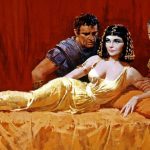GoldenEye (1995)

“GoldenEye,” directed by Martin Campbell and released in 1995, marks a significant moment in the James Bond franchise. As the seventeenth film in the series and the first to feature Pierce Brosnan as the iconic British spy, “GoldenEye” represents both a revitalization of the Bond legacy and a critical turning point in the franchise’s history. This essay explores the film’s narrative structure, character development, thematic elements, and its impact on the James Bond series and popular culture.
“GoldenEye” is set in the post-Cold War era and follows James Bond (Pierce Brosnan) as he investigates the theft of a powerful satellite weapon, known as “GoldenEye,” from a secret Russian facility. The weapon, capable of generating an electromagnetic pulse (EMP) to destroy electronic systems, poses a global threat. Bond’s mission becomes a race against time as he uncovers a conspiracy involving his former colleague, Alec Trevelyan (Sean Bean), who has turned rogue and seeks to use GoldenEye to exact revenge on the West.
The film’s plot is structured around Bond’s pursuit of Trevelyan, interspersed with high-octane action sequences, espionage, and intrigue. As Bond navigates a web of betrayal and danger, he encounters a range of adversaries and allies, including the enigmatic Natalya Simonova (Izabella Scorupco), who becomes a crucial ally in the fight against Trevelyan. The narrative combines elements of traditional spy thrillers with contemporary concerns about technology and global security, reflecting the changing landscape of international relations in the 1990s.
Pierce Brosnan’s debut as James Bond in “GoldenEye” was met with widespread acclaim. Brosnan brings a fresh and charismatic interpretation to the role, balancing the suave and sophisticated qualities associated with Bond with a more modern and relatable edge. His portrayal captures Bond’s charm, wit, and resourcefulness, establishing him as a worthy successor to Sean Connery and Roger Moore.
Sean Bean’s performance as Alec Trevelyan, the film’s primary antagonist, is both compelling and memorable. Trevelyan’s motivations are deeply personal, driven by a desire for revenge against the British intelligence community for betraying his family. Bean’s portrayal adds depth to Trevelyan, making him a formidable and complex adversary who challenges Bond both physically and emotionally.
Izabella Scorupco’s role as Natalya Simonova provides a strong and dynamic female character who contributes significantly to the film’s narrative. Simonova is portrayed as intelligent, resourceful, and resilient, moving beyond the traditional Bond girl archetype to become an active participant in the story. Scorupco’s performance adds depth and dimension to the character, making her a valuable ally to Bond.
Supporting performances, including those by Judi Dench as M and Samantha Bond as Miss Moneypenny, contribute to the film’s overall effectiveness. Dench’s portrayal of M introduces a new, authoritative dynamic to Bond’s relationship with his superior, while Bond’s Miss Moneypenny provides a familiar touch of humor and rapport.
“GoldenEye” explores several themes that reflect the changing context of the post-Cold War world. One of the central themes is the notion of betrayal and loyalty. Trevelyan’s turn against his former allies embodies the theme of personal vendetta and the consequences of perceived betrayal. The film examines how betrayal can drive individuals to extreme actions and the impact of such actions on international security.
The theme of technology and its potential dangers is also prominent. The GoldenEye weapon represents the fears and uncertainties associated with advanced technology and its potential for misuse. The film addresses contemporary concerns about the role of technology in warfare and the ethical implications of its deployment.
Additionally, “GoldenEye” explores the concept of identity and transformation. Bond’s character grapples with the legacy of his past and the evolving nature of global threats. The film reflects on the changing role of spies and the need to adapt to new challenges in a rapidly evolving world.

“GoldenEye” is notable for its high production values and impressive visual effects, which contribute to its status as a revitalization of the Bond franchise. The film’s action sequences, including a thrilling opening sequence involving a daring bungee jump and a high-speed chase through the streets of St. Petersburg, are executed with flair and precision. The visual style of the film combines sleek, modern aesthetics with the classic Bond elements, creating a visually engaging experience.

The film’s cinematography, by Phil Meheux, captures the grandeur and scale of the action scenes while maintaining a sense of intimacy and character-driven storytelling. The use of locations, including the exotic locales of Cuba and the urban landscape of Moscow, adds to the film’s global appeal and enhances its sense of adventure.
The score, composed by Eric Serra, provides a contemporary and energetic backdrop to the film’s action and suspense. Serra’s score incorporates elements of the classic Bond theme while infusing it with a modern sensibility, reflecting the film’s blend of tradition and innovation.

“GoldenEye” was both a commercial and critical success, revitalizing the James Bond franchise after a six-year hiatus. The film’s success reestablished Bond as a cultural icon and set the stage for future installments in the series. Brosnan’s portrayal of Bond was widely praised, and the film’s balance of traditional Bond elements with contemporary themes resonated with audiences.

The film’s impact extended beyond its immediate success, influencing the direction of the Bond series and contributing to the evolution of the spy genre. “GoldenEye” set a new standard for Bond films, combining action, character development, and thematic depth in a way that appealed to both longtime fans and new viewers.

“GoldenEye” (1995) stands as a pivotal entry in the James Bond franchise, marking a successful revitalization of the series with Pierce Brosnan’s memorable debut as the iconic spy. Through its engaging narrative, strong performances, and exploration of contemporary themes, the film reaffirms Bond’s enduring appeal and establishes a foundation for future installments. The film’s blend of action, intrigue, and character-driven storytelling ensures its place as a significant and influential entry in the Bond legacy.










